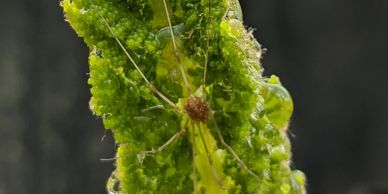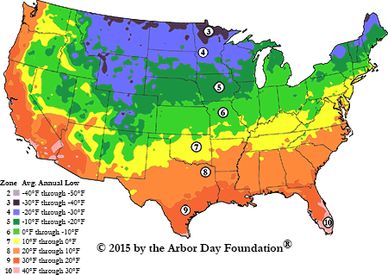FAQ's , TIPS & Conifer Questions
What are dwarf conifers?
What are dwarf conifers?
What are dwarf conifers?

The simplest answer is that they are slow growing varieties of their "normal-sized" relatives. Due to their slow growth, they remain at a small size for a long time.
What are dwarf conifers?
What are dwarf conifers?

An Eastern White Pine (Pinus strobus) might reach 50-75 feet in 40 years.
How big do they grow?
What are dwarf conifers?

This dwarf Eastern White Pine (Pinus strobus 'Macopin') might reach 8' over the same time period.
Will they grow in my area?
There are varieties suitable for almost any growing area in the U.S.
Some prefer shade, some prefer plenty of light. Some can withstand very harsh winters. Others are happier in more temperate regions. The layout of your landscape also has an effect - if you live in the mountains but have a nice, warm sunny south-facing slope, you might be able to plant varieties more commonly found in the lowlands.
How should I plant?

Before planting, mix some compost, composed manure, or bark mulch in with the replacement soil to equal about 1/3 of the volume. The diameter of the hole should be 6" - 12" wider than the root ball or container of your tree, and deep enough for the entire root ball to fit just above (about 1") ground level. Place your new tree next to the hole, lying on its side. Then carefully roll it into the hole. Plant so that the root ball is an inch above ground level. Replace the soil until your tree is completely stable and the hole is filled in. Tamp down the soil with your foot. Water it in very well. Apply some mulch to help retain moisture and protect the roots.
What about maintenance?

Dwarf Conifers are very easy to maintain - that's part of what makes them such great landscape plants. Without pruning or shearing, they naturally replicate their parent plant with predictable growth, and habit. All they need is an adequate amount of water for the first 2 growing seasons, or the first 2 summers.
Do I need to fertilize?
What about insects and diseases?

Dwarf Conifers do just fine without the addition of fertilizers or other special treatment if planted properly. If you are doing new planting in spring or summer, you may want to mix some 10-10-10 (or similar) fertilizer to the planting soil to give the plant a good head start. We use a 3 month, time release fertilizer at our nursery. For new plantings in fall or winter, wait until spring to fertilize.
The use of fertilizer on dwarf or miniature plants can affect the overall growth rate and change the desired growth habit. Fertilizing for plant health is a good practice, while adding fertilizer to increase growth rates is not recommended for dwarf conifers.
What about insects and diseases?
What about insects and diseases?

Below are some resources from the NC State Extension & the American Conifer Society regarding potential pests affecting conifers.
A healthy tree generally will not have problems with disease or insects. Ensuring plants have enough water, and the appropriate amount of sunlight is vital to their health and viability.
https://content.ces.ncsu.edu/insect-and-related-pests-of-shrubs/pests-of-conifers
https://conifersociety.org/conifers/articles/parasitic-wasps-conifers-evergreens/
First-year care:

As with all landscape plants, trees, shrubs, and garden perennials, it is very important to keep them watered for their first year. During this critical time period, the plants are developing new roots and doing their best to extend their roots into the surrounding soil. Until they accomplish this task, which takes a couple years, they are vulnerable to drying out. Once a root has completely dried out, it will die. Trees need 1" of water per week. In general, water your trees from early spring through fall. If you are in a location where the ground never freezes, water all year round (if rain is not sufficient). We recommend getting a good quality rain gauge to monitor, and help insure proper watering through-out all seasons.
Agriculture Extension Agents

One of the best sources for information and answers on any plant or tree question is your local Agricultural Extension Agent. Your local agent is knowledgeable in a broad range of planting subjects, and will be familiar with any issues related to your particular location. https://www.ces.ncsu.edu/
Contact Us

If you have more questions please reach out to us:
828.301.2184
or come visit us in Weaverville, NC
Hardiness Zone Map
The Arbor Day Foundation developed this U.S. Hardiness Zone Map based upon data from 5,000 National Climatic Data Center cooperative stations across the continental United States.
American Conifer Society
The American Conifer Society was founded in 1983 to help educate the public about conifers, which are cone-bearing plants. The Society is governed by a board of directors with representation from each of the Society's four regions
Mountain Meadows Nursery Inc.
40 Elkins Branch Road, Weaverville, North Carolina 28787, United States
